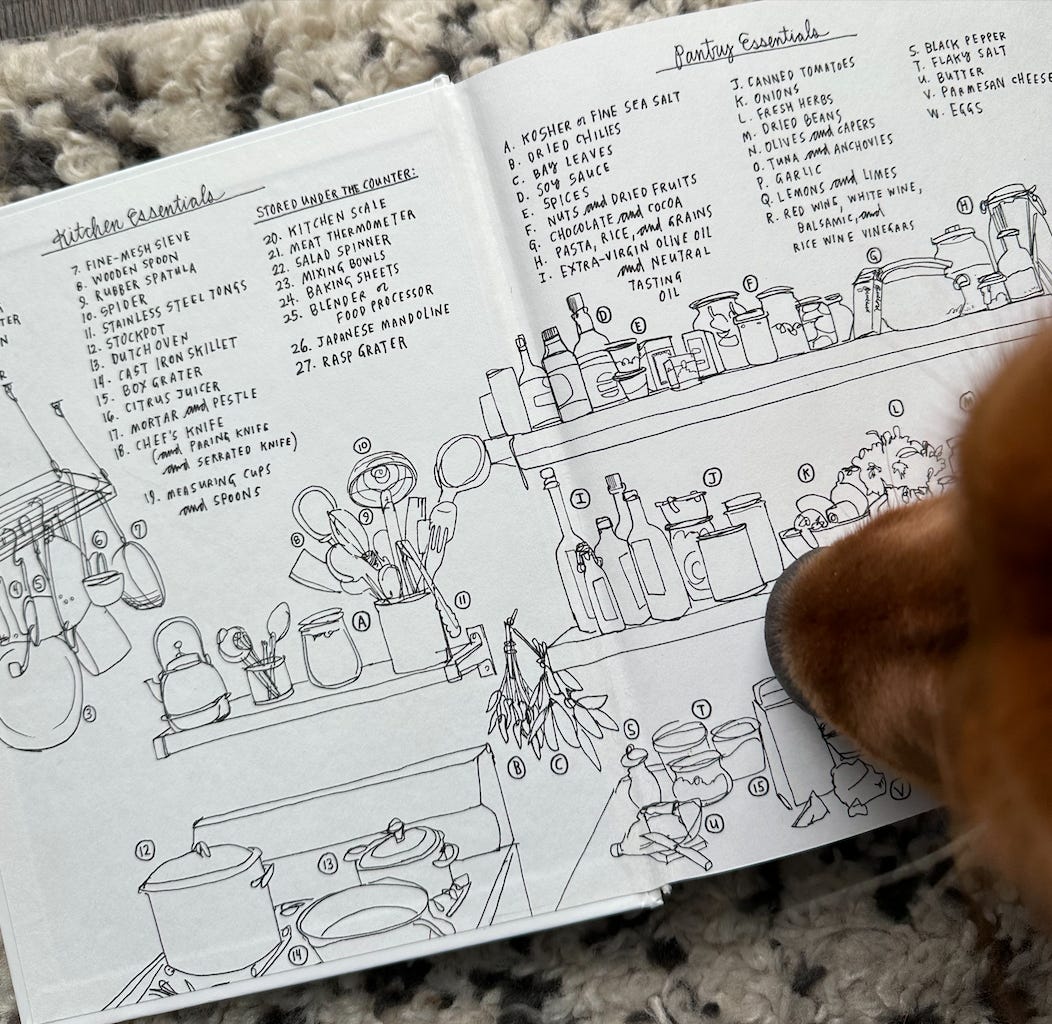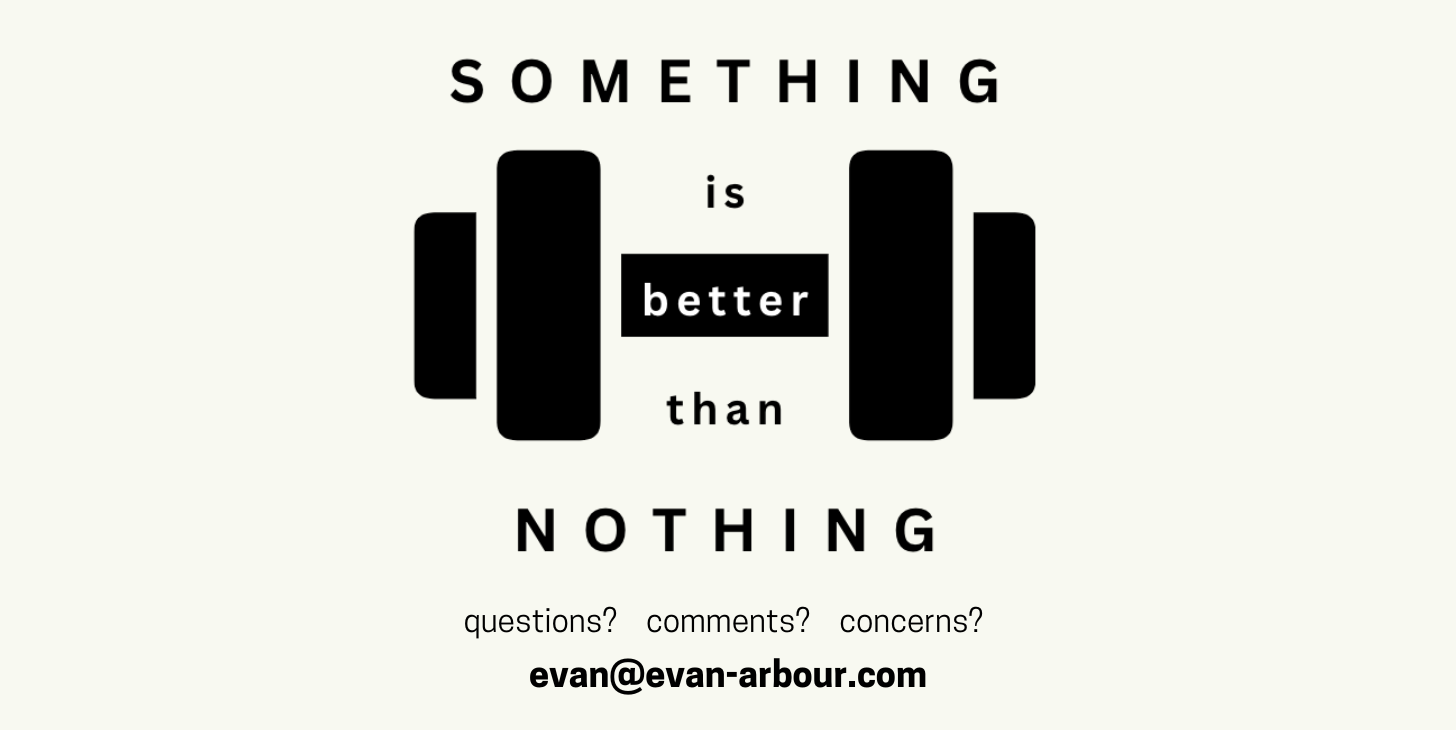Meal Prepping Isn't Practical – Here's a Solution
Recycle the containers, and get those hours back.
I have been in the fitness industry for almost 10 years and I have gone through waves of meal prepping. I have owned towers of black plastic containers with the clear plastic lids. My fridge has resembled a back-fill of a quick order restaurant. It would work for a while, but every time I would go through the motions of meal prepping I stopped because it got tired, and boring, and honestly frustrating.
My biggest issue with meal prepping is the time commitment: the food vloggers out there expect us to dedicate 3+ hours to cooking 4-5 different meal options every Sunday? I can hear them now: Put on your favorite self-help audiobook — I’m *loving* You Are a Badass — and enjoy knowing you’re setting yourself up for success later in the week!”
Listen, Gwenyth (that name feels right to me for a food vlogger) — who has the time! Do you have children? Do your children have friends/homework/school events? Do you have plans with friends? Travel?
My other issue is the monotony: I am a habitual eater and tend to gravitate towards similar meals in rotation, but even I can reach a limit after days of bland chicken and broccoli. I understand the philosophy of meal prepping: make a big batch of something and have it throughout the week, but being honest: we can do better.
BUT IT’S EXPENSIVE?
There are advantages to creating your own meals at home: A study here found that “home cooked dinners were associated with great dietary guidance compliance without significant increase in food expenditures.” The average household in the US spends $3,000 a year on eating out according to the Bureau of Labor Statistics. If you think buying groceries to eat at home is expensive, but don’t bat an eye when handing your credit card to your server — take a pause and reevaluate. The top strategy I have is to supply your kitchen with long-lasting, shelf-stable essentials that have a variety of uses. You’ll save money and be able to maximize their effect on flavor.
STOCK THE ESSENTIALS
I grew up watching my dad create recipes in the kitchen from seemingly nothing. He would look in the (what I thought to be empty) fridge, and 30-60 minutes later, we were sitting down together. I was always in awe of that skill. And I have been working on it for a long time. I grew up in the kitchen and love cooking.
You do not need to love cooking to implement my strategies below - read on!
My response to meal prepping is simple: have a stock of the essentials in your pantry, and you will always have the ability to create something simple and delicious.
This idea stems from one of my favorite cookbooks: Salt, Fat, Acid, Heat by Samin Nosrat. Printed on the inside cover is a beautiful drawing of PANTRY ESSENTIALS.

“…have a stock of the essentials in your pantry, and you will always have the ability to create something simple and delicious.”
If you read the last article Adhering To Your Plan On-The-Go, you know that 72% of Americans eat out 2 or more times per week. I think that is partly because the process of “I’m hungry” to "I’m eating” can be long, especially if we don’t have much to use. While I love getting food with friends — I definitely fall into that category of 2ish times per week — I always make sure I have what I need at home to make something outside of that.
THE PANTRY ESSENTIALS (with my two cents):
Kosher or Fine Sea Salt
Dried Chiles
Bay Leaves
Soy Sauce (or Tamari if gluten-free)
Spices (generic, yes. I suggest this 7-spice starter pack: garlic powder, crushed red pepper flakes, cumin, oregano, rosemary, paprika, chili powder)
Nuts and Dried Fruits
Chocolate and Cocoa
Pasta, Rice and Grains (I love the 90-second microwave packs)
Extra Virgin Olive Oil and Neutral Oil (avocado or canola oil is great)
Canned Tomatoes (Marinara Sauce too!)
Onions (scallions, shallots, leeks also work!)
Fresh Herbs (my favorites: dill, cilantro, parsley)
Dried Beans (or canned!)
Olives and Capers
Tuna and Anchovies (canned and jarred are great)
Garlic
Lemons and Limes
Red Wine, White Wine, Balsamic, Red Wine Vinegar
Black Pepper (whole peppercorns, buy the ones with the grinder attached)
Flaky Salt (bougie — not always necessary)
Butter
Parmesan Cheese
Eggs
(Salad Greens)
(Packaged Spice/Taco Mix)
(Frozen Vegetables: Broccoli, Cauliflower, Carrots)
(Hot Sauce: Sriracha, Tabasco)
Please do not read that and think: omg I need to go out and buy this entire list. The beauty of these ingredients is they ARE SHELF STABLE. With the exception of the produce (onions, lemons, fresh herbs) – everything else lasts a very long time. Grow your essentials over time and eventually you will have an incredible base to create some great food.
The above list allows you to create different variations in flavor, however; without a doubt sources of protein are an essential aspect to every kitchen.
THE PROTEIN ESSENTIALS:
Chicken
Ground Turkey
Deli Slices
Greek Yogurt
Hummus
Shrimp
Egg Whites
Lean Ground Beef
Tofu
Satan
Fish (Salmon, Halibut)
Protein Powder (or pre-made shakes)
USE YOUR ESSENTIALS TO CREATE MEALS
The goal is to mix and match the two lists together to create a wide variety of simple options. Start with your protein source and go from there:
Roasted Chicken + Brown Rice + Broccoli + Scallions + Soy Sauce
Ground Lean Beef + Taco Mix + Salad Greens + Lime + Tabasco
Salmon + Butter + Lemon + Dill + Salt/Pepper + Salad
Ground Turkey + Marinara Sauce + Pasta + Parm
Egg Whites + Butter + Garlic + Leeks + Parm
COOK MORE AND STORE
While you’re making a meal, make enough for two meals! It’s very common for me to make something for dinner and have another portion for lunch the next day. But Evan — isn’t that meal prepping?! Didn’t you say you didn’t do that??
Yes, in a sense it’s meal prepping, on a micro level. I think there’s a difference between making enough for two meals versus making sheet pans of soggy (trying to be roasted) carrots and boring chicken for the next 5 days.
IF YOU REALLY DON’T LIKE COOKING - READ THIS
Look, I know there are people who do not enjoy it — you have to like the process and I get that’s not for everyone. It would be impractical of me to say “Cooking is amazing! Go out and use your kitchen!”
So let’s talk about it what you can do. If you are in the group that orders food via an app or goes out to dinner 4+ times per week: navigating the menu is your best tool to staying on track as highly frequent diner. And here’s why:
According to this study, a typical restaurant meal contains 1205 calories. American, Chinese, and Italian spots top the scale average at 1495 per meal on average.
Going out to eat that many times per week can add up really fast. If you are a frequent diner, there needs to be some element of prioritization when choosing what you order if you expect to see progress. Here are my suggestions:
Ditch or Limit the Alcohol: Discussed in a previous article here, alcohol isn’t a bad addition, but if you’re eating out regularly, liquid calories can add up quickly.
Focus on protein-oriented dishes: Protein is going to make you feel more full and help build and maintain muscle. It’s essential. Look over the menu for dishes that either have protein in the name of the dish or listed right at the beginning. “4-Cheese Italian garlic stuffed bell pepper with chicken” is not your best bet. “Chicken Fajitas with roasted bell peppers and onions” is likely to have more protein and a bigger serving of chicken.
Limit the bread/chip and salsa basket: This one is the hardest for me. I loooove a chip basket. I focus on just having the one and politely declining a second/third (yes I’ve done it okay!). Immediately reduces overall calorie intake of the meal.
Drink sparkling water or diet soda: You don’t need to spend $4.80 on that glass bottled water - soda water from the bar is perfectly fine! Additionally, diet soda is a great tool for feeling more full (due to the carbonation) without extra calories.
12 WEEK PLAN-TO-ACTION PROGRAM STARTS 12/17
Starting December 17th, I will be coaching paid subscribers through a 12 week PLAN-TO-ACTION program. We will take all that we have learned from the newsletter so far and work towards our own specific goals over the course of 12 weeks. It’s time to put all this work into action.
I will also be participating in my own program; I will be right in it with you. Paid subscribers will have access to a 12-Week Helpline that I will monitor to answer questions throughout. I will be posting my progress via Instagram for everyone to follow along.
Before we start you will need:
A bathroom scale to measure body weight: the one that I use is $26 on Amazon and it comes with it’s own app to store data.
A kitchen scale to measure calorie intake: you can get this one for less than $10.
Any food tracking app that works for you, there are plenty free ones out there to use!
If you are not yet a paid-subscriber and have been looking for a sign to get started, this is it.





